
A Look Back In Time?
I recently went on a tour of the incredibly impressive James Webb Space Telescope, which is planned to be deployed into space in 2021 [1]. During my tour, the tour guide mentioned how we would be able to see farther back in time with this telescope. This perplexed me. How can we see the past??
I brought this question up to some physicists that I know, and they gave me a super intuitive explanation that I thought would be fun to share!
In order to understand this phenomena, let’s begin first with unraveling what happens when a thunderstorm occurs. Let’s suppose there is a thunderstorm happening one mile from where you are standing.
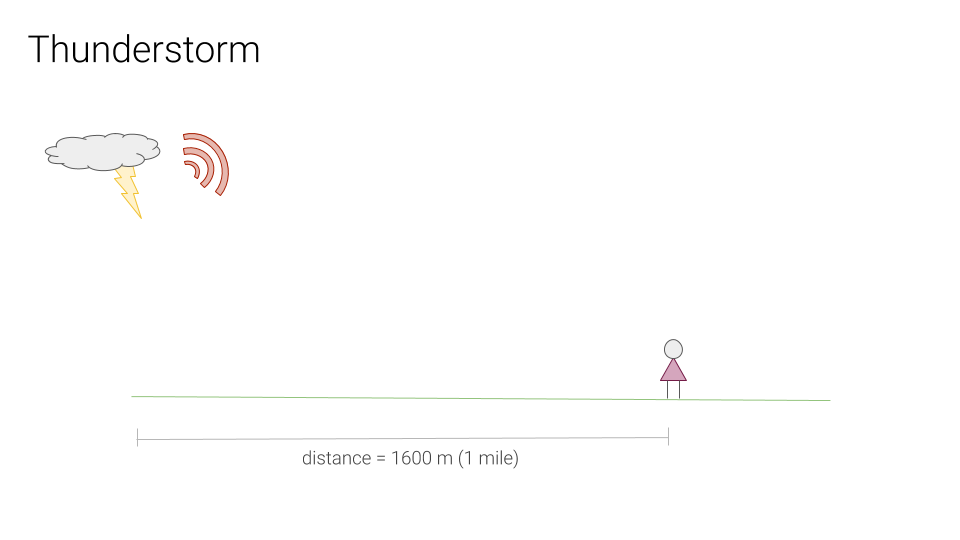
What is the timeline that we see and hear from where we are standing? We first see lightning, and then, some time later, we hear thunder.
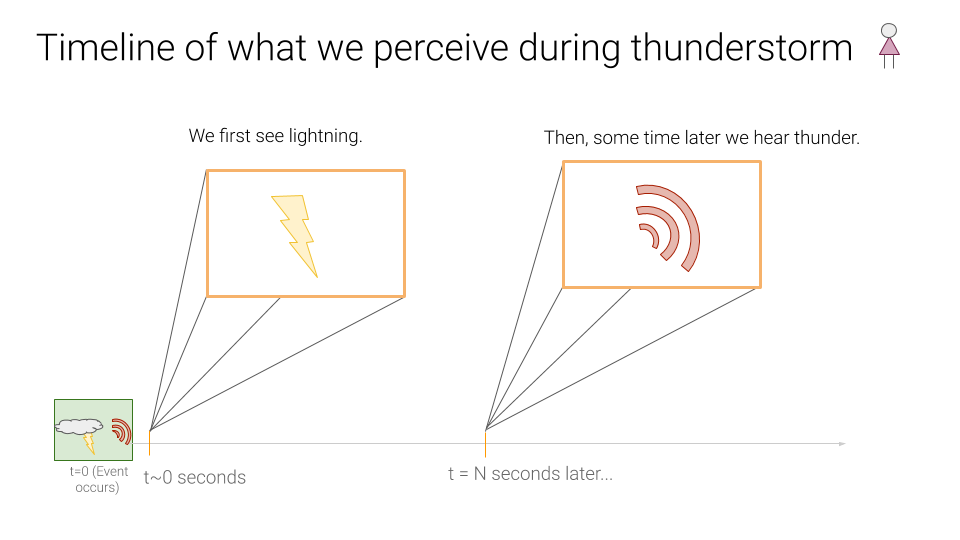
The lightning and the thunder are generated at the same point in time! Why do we process them at different times? The answer is because it takes time for things (humans, light and sound) to travel from one point to another.
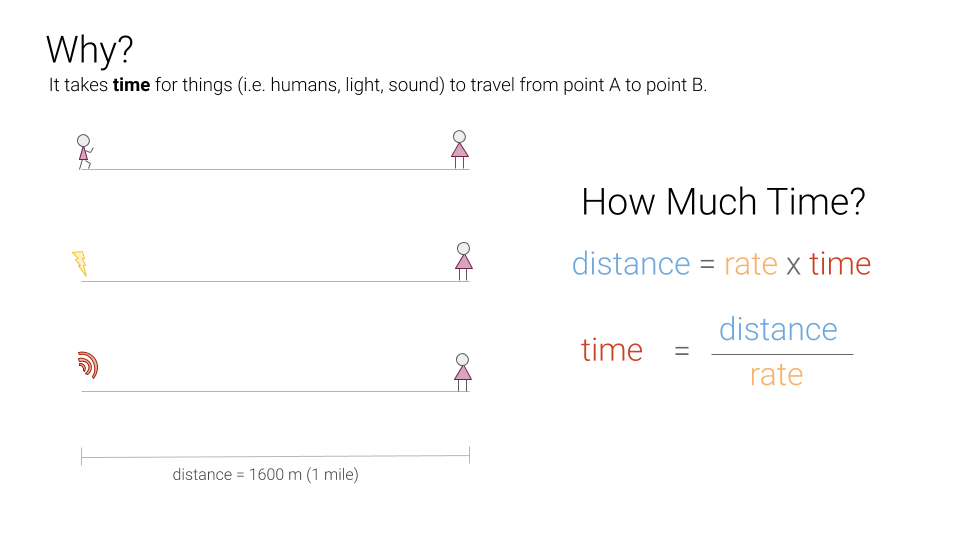
Let’s take a closer look at exactly how much time it takes for light and sound, from a thunderstorm, to reach us. What distance does the light and the sound need to travel in order for you to process it? It needs to travel from the source (where the thunderstorm is happening) all the way to your eyes and ears!

Lightning and thunder are both traveling the same distance, so why the different amounts of time to reach you? The answer is because light travels WAY faster than sound. The speeds of each are shown below.
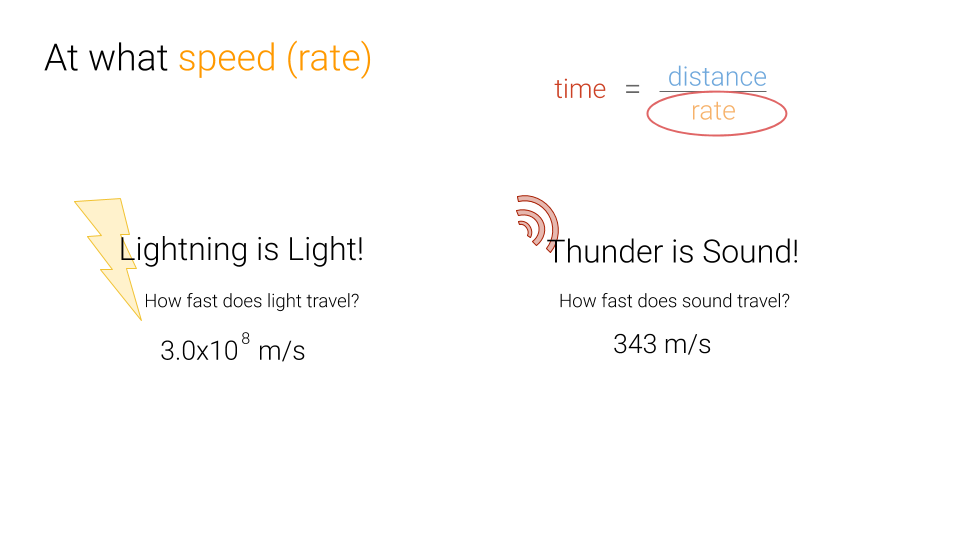
So you can imagine, if light travels way faster, then it will reach you so much faster! If we use our formula on the top right corner, which tells us how long it takes for something that is going constant velocity (like light and sound) to travel some distance, we can figure out exactly how much longer the sound of thunder will take to reach us than the light from the lightning.
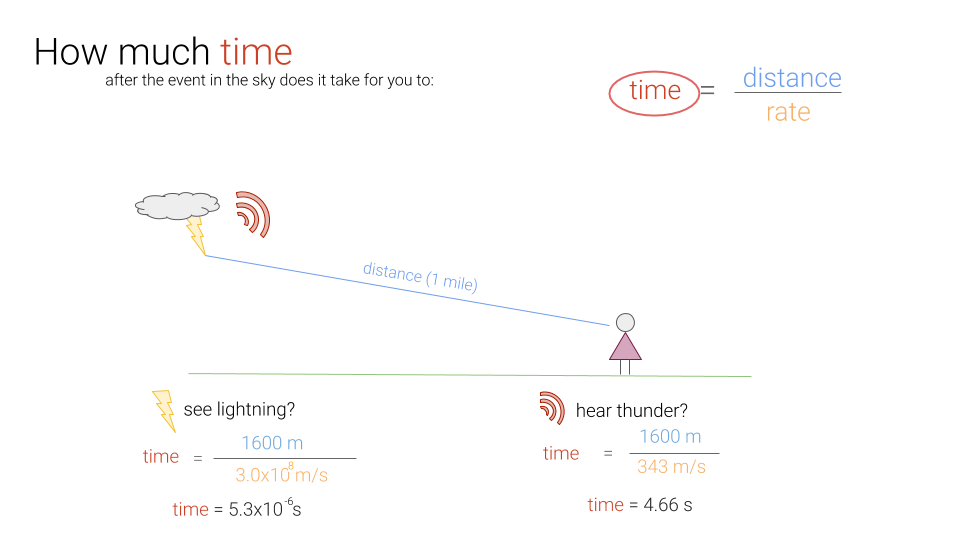
Now, why is this important? The main idea is that by the time we process light or sound, we are processing something that actually happened in the past. Since it took a finite time for light and sound to reach you, the light and sound that you see or hear at a given time, actually came from an event that happened in the past!
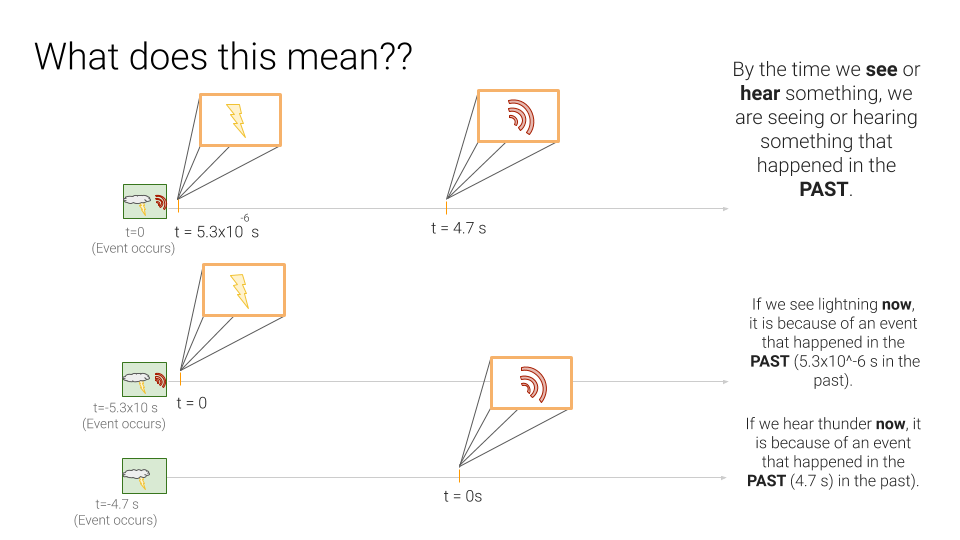
Since light travels so fast, the light we see from a lightning flash that occurs one mile away, we see almost instantaneously. But what about the light we process from objects that are much farther away??
Just a brief aside to make it more explicit what is actually happening when we see an object. When we see an object, we are processing light that has reflected off the object and has traveled the distance from the object to our eyes. This means that light coming from objects far away (like our moon, mars, and our sun) actually has to travel quite some time before reaching our eyes!
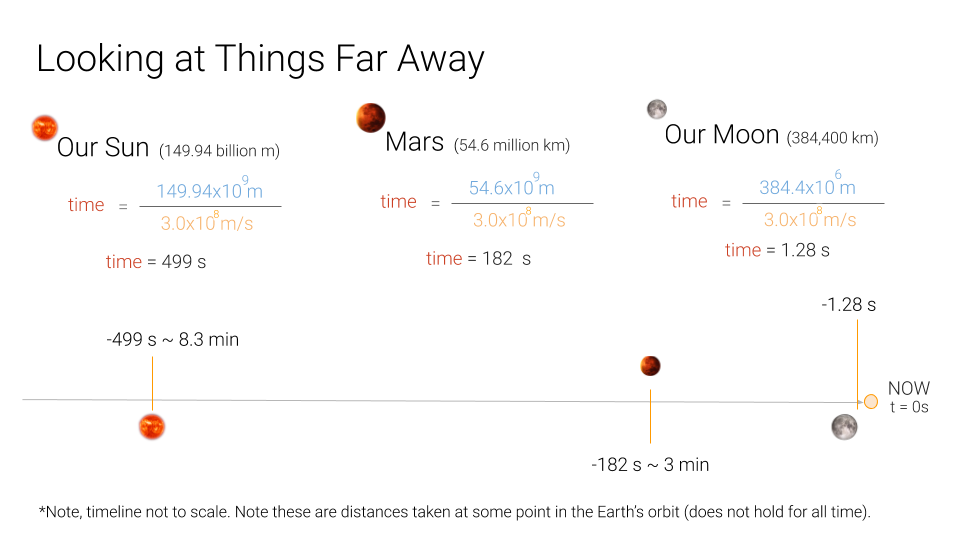
This means, whatever we see of them NOW, is a snapshot of what they looked like some time in THE PAST. How far in time in the past is equivalent to how long it took for light to travel from the object to us. This means whatever light (image) we see of the sun NOW, is actually what the sun looked like 8.3 min ago!! We can never see how something far away actually looks like in the present time — only how it looked like in the past!

Scientists realized that for objects extremely far away, it is much easier to describe the distance of an object not by how many meters away an object is located, but instead, by how long it takes for light from that object to reach us [2]. Our North Star is so far that it would take approximately 323–433 years for light to reach us! This means that what we see of the North Star now, is actually how it looked 323–433 years ago!
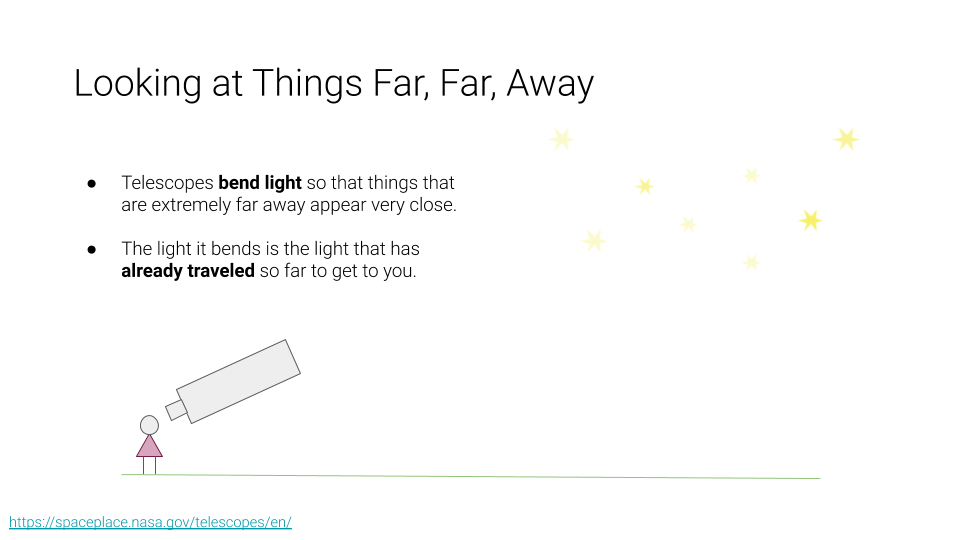
Scientists were very smart and from early on, discovered tools they could use to bend light in ways so that objects that are extremely far away seem much closer than they actually are. These tools are actually what you know as telescopes [3]. Telescopes allow us to see farther away, which also means it allows us to study how objects looked when they existed farther back in time.

The above are some pretty cool galaxies that we can see from our telescopes! We can see ~29.35 million light years away. You might ask, how far does existing technology allow us to see??

The Hubble Telescope is an incredible space telescope that has been taking images of our universe for almost 30 years now [5]! In 2004, the scientists operating the Hubble Telescope decided to point the telescope in a direction where the sky seemed especially dark, and collected light in that single direction for a total of 10 days! The farthest galaxies scientists were able to see were approximately 13.2 billion light years away [4]. This means that we can study what galaxies looked like 13.2 billion years ago!! The beginning of our universe was thought to begin about 13.7 billion years ago! This means we can almost see so far that we can see the beginning of our universe!

This is my favorite cosmology image from the Hubble telescope. It shows the evolution of the galaxies over time from images collected from our Hubble telescope. You can notice that galaxies seem more primitive and simple the farther back in time. As time progresses, they seem to take on these more and more complex spiral formations!
The James Webb Space Telescope, which is the telescope that inspired this post, will soon be deployed into space. It is meant to leverage the latest state-of-the-art technology to help us see even farther into space, and that means even closer to the approximated start of our universe.
So to conclude, we can see the history of our universe because it takes time for light from objects to travel to us. This means that light we collect coming from objects that are extremely far away have traveled millions or even billions of years to reach us, and the light we see is an image of how that object appeared a long, long time ago.
Some questions I just want to leave you with as food for thought:
- If we were able to transport ourselves instantaneously to a location in space, how far would we need to transport ourselves so we could see the dinosaurs on Earth?? (Hint, dinosaurs existed 65 million years ago)!
- Since our universe is undergoing constant expansion, what does that mean about the light we collect from very far away??
- What if we were able to see the beginning of our universe. What would we see??
- What do you think galaxies will look like in the future? What will “more complex” be?


